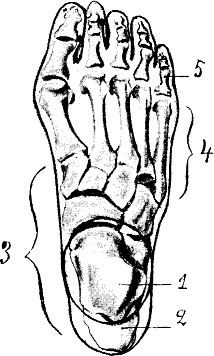Specialty rheumatology ICD-9-CM 735.2 eMedicine orthoped/125 | ICD-10 M20.2 DiseasesDB 33134 MeSH D020859 | |
 | ||
Hallux rigidus or stiff big toe is degenerative arthritis and stiffness due to bone spurs that affects the MTP joint at the base of the hallux (big toe).
Contents
Hallux flexus was initially described by Davies-Colley in 1887 as a plantar flexed posture of phalanx relative to the metatarsal head. About the same time, Cotterill first used the term hallux rigidus.
Causes
This condition, which occurs in adolescents and adults, can be associated with previous trauma. The true cause is not known. Most commonly, hallux rigidus is thought to be caused by wear and tear of the first metatarsophalangeal joint.
Symptoms
Although the condition is degenerative, it can occur in patients who are relatively young particularly active sports people who have at some time suffered trauma to the joint (turf toe). A notable example is NBA star Shaquille O'Neal who returned to basketball after surgery.
Classification
In 1988, Hattrup and Johnson described the following radiographic classification system: Grade I - mild changes with maintained joint space and minimal spurring. Grade II - moderate changes with narrowing of joint space, bony proliferation on the metatarsophalangeal head and phalanx and subchondral sclerosis or cyst. Grade III - Severe changes with significant joint space narrowing, extensive bony proliferation and loose bodies or a dorsal ossicle.
Treatment
Non-surgical treatment Early treatment for mild cases of hallux rigidus may include prescription foot orthotics, shoe modifications (to take the pressure off the toe and/or facilitate walking), medications (anti-inflammatory drugs), injection therapy (corticosteroids to reduce inflammation and pain) and/or physical therapy.
Surgical treatment In some cases, surgery is the only way to eliminate or reduce pain. There are several types of surgery for treatment of hallux rigidus. The type of surgery is based on the stage of hallux rigidus. Stage 1 hallux rigidus involves some loss of range of motion of the big toe joint or first MTP joint and is often treated conservatively with prescription foot orthotics. Stage 2 hallux rigidus involves greater loss of range of motion and cartilage and may be treated via cheilectomy in which the metatarsal head is reshaped and bone spurs reduced. Stage 3 hallux rigidus often involves significant cartilage loss and may be treated by an osteotomy in which cartilage on the first metatarsal head is repositioned, possibly coupled with a hemi-implant in which the base of the proximal phalanx (base of the big toe) is resurfaced. Stage 4 hallux rigidus, also known as end stage hallux rigidus involves severe loss of range of motion of the big toe joint and cartilage loss. Stage 4 hallux rigidus may be treated via fusion of the joint (arthrodesis) or implant arthroplasty in which both sides of the joint are resurfaced or a hinged implant is used. Fusion of the joint is often viewed as more definitive but may lead to significant alteration of gait causing postural symptomatology. The implants termed "two part unconstrained" implants in which a "ball" type device is placed on the first metatarsal head and "socket" portion on the base of the big toe do not have a good long term track record. The hinged implants have been in existence since the 1970s, have been continually improved and have the best record of improving long term function.
